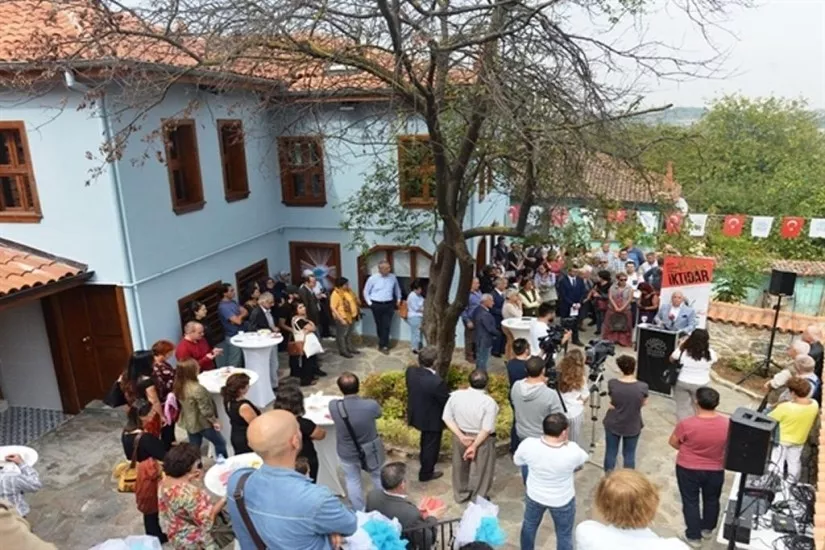Gümüştepe Neighborhood, which is an old village of Nilüfer, is actually called ile Misi bugün today as it is for hundreds of years. Misi, one of the oldest settlements in Bursa, is very close to the city center. On the 5th kilometer of Bursa-Orhaneli Road, it welcomes its guests with its historic houses on the slopes and surrounded by four hills covered with forests and Misi Creek, which is curled up from the slopes of Uludağ. The tea gardens along the creek are frequented by those who want to be overwhelmed with nature. Another thesis on the name source of Misi, which reminds the name of the Mysia region of Ancient Anatolia mentioned in the historical texts of Homer, Herodotus and Strabo, is that Mysos means hornbeam tree. Due to the high number of hornbeams in Uludag, Uludag was also called “Mysos ve and the name of the Misi village at the foot of Uludag comes from the local people. As a result of the archaeological survey conducted in Misi in 2016, it was found that there was a settlement dating back to the late 6th century BC in Karapınar. In addition, clues regarding the existence of the settlement starting from the Late Antique Period and continuing until the Byzantine Age were obtained in Salavat and Kalander locations. It was found that there was a tumulus at Demirci and a necropolis at Salavat. In order to indicate the history of the neighborhood in the Middle Ages, the fortress located at the location called Hisarlık, the nearby architectural remains of a church used as a decorative element in the gardens and the streets, which were thought to belong to a church, were recorded and published in the Archaeological Culture Inventory of Nilüfer District in 2018. It has been located below.
Odrysse, which is mentioned in the Geographics book of the ancient geographer Strabon, is known to be the Nilüfer River which passes through the middle of Misi today. Later, the name of the river called Silvardos (Silver River) changed over time to Nilüfer.
The fact that the region is a strait suitable for concealment has led monks to establish a strong missionary organization for centuries, various monasteries have been established in the region and Misi has become an important center of Christianity. According to popular myth, Misi also hosted the monastery named “Misipoli.. According to the same myth, a council where Bible debates were held during the first Christian period was gathered in Misi. Among the ruins of this monastery is believed to have buried a copy of the Bible.
In 1316, as a requirement of the Ottoman military strategy, Misi, like other small settlements in the vicinity, was added to the Ottoman lands in order to facilitate the conquest of Bursa. Thus, Misi entered the Ottoman borders 10 years before Bursa. Misi, whose name was changed to üm Gümüştepe ında in 1961, remained a village until 1987 and then it was removed from the village status and became a neighborhood of Nilüfer district.
Throughout history, the Nilufer Stream, which flows from the south to the north, has also divided the Bursa Plain into two, so all caravans coming from the west, those who want to continue in the direction of Misi after crossing Bursa, have passed the bridges and moved east and south. In other words, Misi is in a sense located on the junction point that connects Bursa to the east and south: From the center of Bursa (Prusia ad Olympum) to Çekirge, from there through Dobruca, the road from Misi to the valley is divided into two, where one of the branches is Dağyenice. from the Atlas Quarter; the other one continues towards Demirciköy, Tahtalı, Çalı, Yaylacık, Hasanağa and Kayapa.
Wine production in Misi, which has a long tradition of viticulture in agricultural production until 2000s, is thought to be related to Pagan belief or Christianity. In the years when the grapes were abundant, the grapes which increased from the wine production in Misi were expressed by the local people in oral history studies where they were used to make molasses. Thanks to the delicious Misi molasses and the fact that it did not spoil even during the days of cruises, it was stated that molasses and wine were exported abroad from Mudanya by ships, but this trade stopped in the First World War. Again, as reflected in the oral history interviews, the winemaking activity in the village gained momentum again in the 1930s. We learn that this production was carried out by a cooperative with 7 partners established in 1937, and that the winemaking activities were carried out under the support and control of TEKEL. The aroma of yellow grapes and black, small-grained ket musket grapes veren that give the taste of wines according to the retaliers, tat The taste ratio that gives the quality of isi Misi Wine sağlam has enabled Bursa and Marmara to get the title of the most delicious wine. However, production has come to an end in the 2000s due to reasons such as failure to cover costs, indifference, fragmentation of families and lack of support for production.
In the past years, as in many villages of Nilüfer, silk cocoon production was widespread in Misi. The houses were built with high ceilings and sheds for the production of silk cocoons. At the time of the silkworm, at least one of the rooms would leave. The care taken towards the new guests of the house and the climate of the village suitable for this activity have made Misi known for its high quality cocoons. Today, silkworming has taken its place in the traditional handcrafts by Misi women.
